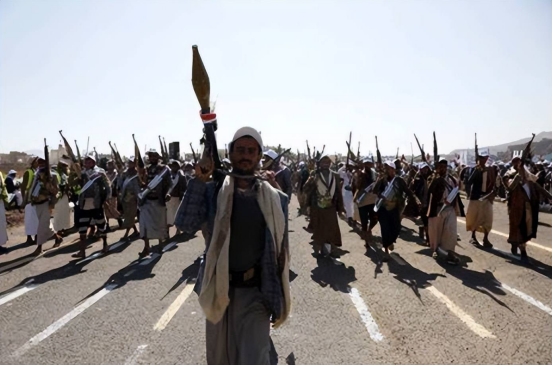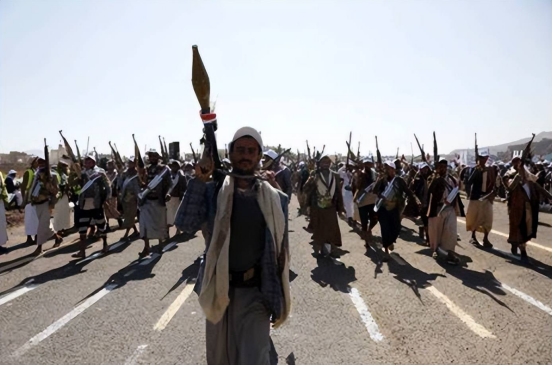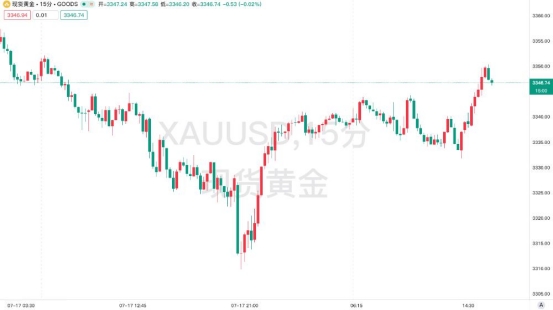750 tons of Iranian arms found in the Red Sea! Houthi armed forces' supply lines cut off. How does the geopolitical storm stir up the gold market?
- 2025年7月22日
- Posted by: Macro
- Category: News

紅海驚現750噸伊朗軍火! 胡塞武裝補給線被斬斷,地緣風暴如何攪動黃金市場?

On July 17, 2025, Yemeni security forces intercepted a cargo ship flying the Liberia flag while performing patrol missions in the Red Sea. The 750 tons of weapons on board caused a global shock. According to the on-site video and list released by the Yemeni authorities, this batch of weapons includes advanced equipment such as naval missile systems, air defense radars, attack drones, and anti-armor missiles. Some of the weapons have Persian manuals and logos of companies affiliated with the Iranian Ministry of Defense that directly point to their sources. Tariq Saleh, a member of the Yemeni Presidential Leadership Council, made it clear in a statement that this batch of weapons "started from Iran and was aimed directly at the Houthi armed forces," and emphasized that its tactical value far exceeds the needs of the Yemeni civil war, suggesting that it may be used in a wider regional conflict.
Iran immediately denied any involvement in the incident. Foreign Ministry spokesman Nasser Kanani called the accusations "political manipulation by Western countries" on social media, and stressed that Iran "has never provided military assistance to any non-state actor." However, the international community did not buy it: the U.S. Central Command called the interception "a key action to contain regional conflicts," the EU foreign affairs spokesman said it would "re-evaluate sanctions against Iran," and Saudi Arabia announced that it would strengthen military patrols in the Red Sea. Even more ironic is that the drone components seized in Yemen are highly similar to the key components of Iran's "Witness-136" drone, which was used by the Houthi armed forces to attack Israeli targets.
2. Escalating geopolitical risks: Paralysis of Red Sea shipping and shock to global supply chain
The weapons seizure incident directly impacted the lifeline of Red Sea shipping. As of July 18, the average daily traffic volume of the Suez Canal has dropped to 25 ships, a decrease of 32% from before the crisis. Osama Rabie, chairman of the Egyptian Suez Canal Authority, confirmed that the canal revenue in the 2023/2024 fiscal year has dropped by 23.4% year-on-year to US$7.2 billion, while the figure in the 2022/2023 fiscal year was US$9.4 billion. Shipping giants Maersk and Mediterranean Shipping have announced an indefinite suspension of the Red Sea route. 90 container ships have been diverted to the Cape of Good Hope in Africa, resulting in an extension of the transportation cycle from Asia to Europe by 10-15 days and a surge in logistics costs. The war insurance premium in the London insurance market has soared to 5% of the ship's value, a record high since 2008. A container ship passing through the Red Sea needs to pay an additional premium of US$450,000, which is equivalent to the cost of 20 modified drones of the Houthi armed forces.
The spillover effect of geopolitical risks was quickly transmitted to the financial market. In the early Asian session on July 18, London gold opened at $3,338.5/ounce, with a fluctuation range of $3,333.9-3,344/ounce. It is currently trading at $3,346.87/ounce, up 0.25%. In terms of technology, the price of gold fluctuated in the range of $3,335-3,345, and the daily level was still in a wide range of $3,320-3,350. The 50-day moving average and the 200-day moving average formed a splint range of $3,325-3,340, and the middle track of the Bollinger Band at $3,335 became a short-term watershed between long and short positions.

Iran's attitude in this incident is intriguing. On the one hand, the official denied any involvement in the arms shipment and stressed that it "never supported regional conflicts"; on the other hand, it did not make any substantive rebuttal to the Yemeni government's accusations, nor did it provide any evidence to prove the possibility of a third party supplier for the source of the weapons. This ambiguous tactic of "neither admitting nor clarifying" is considered by analysts to be Iran's strategic retreat in the game between the United States and Iran - avoiding triggering a new round of US sanctions while being unwilling to completely cut off ties with the Houthi armed forces.
The United States took the opportunity to increase pressure on Iran. On July 18, the U.S. Treasury Department announced new sanctions against 18 Iranian individuals and entities for "supporting Iran's ballistic missile program and transnational crime." This was another move after the Houthi armed forces were re-listed as a "terrorist organization" in June. The Pentagon also announced that it would strengthen military patrols in the Red Sea and consider establishing an "escort alliance" with allies to ensure the safety of the waterway. Analysts pointed out that the U.S. move was both a deterrent to Iran and an excuse for possible future military intervention.
In this era of deep linkage between geopolitics and financial markets, the value of gold as a "crisis currency" has once again been highlighted. The 750 tons of weapons in the Red Sea are not only a testament to the relationship between Iran and the Houthis, but also a microcosm of the chaos in the Middle East.
